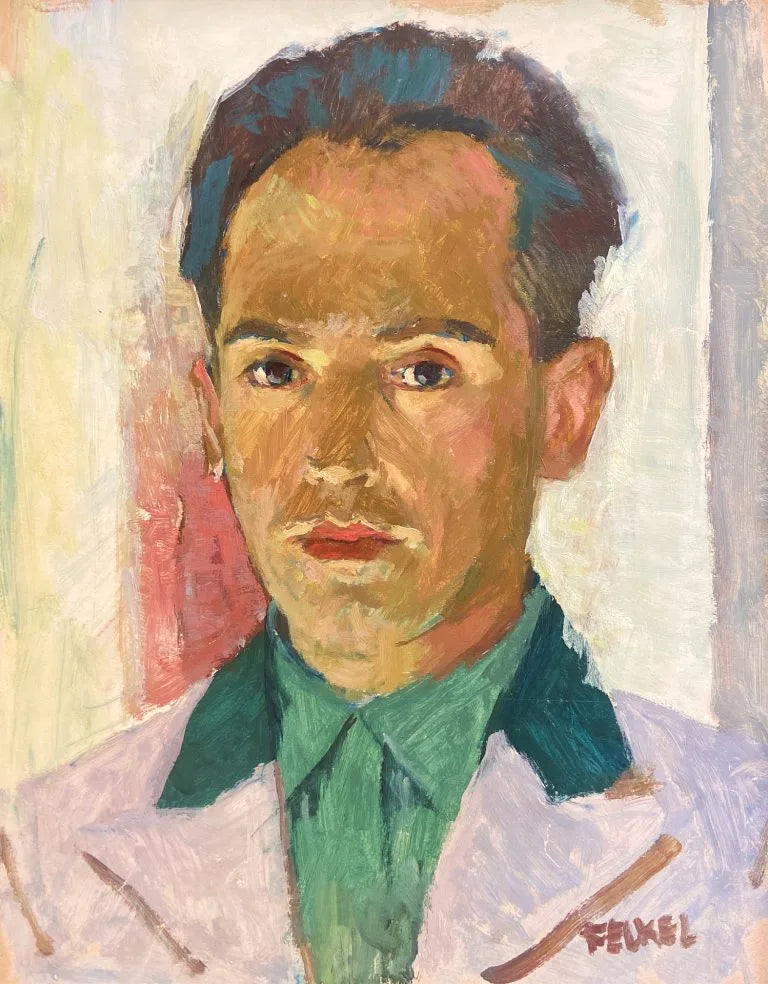

Carl Felkel
Self Portrait
Oil on board, signed lower right
Image size: 13 1/2 x 17 inches (34.25 x 43 cm)
Contemporary frame
Carl Frederich Felkel
Painter Carl Friedrich Felkel was born in 1896, in Stockerau, near Vienna, Austria-Hungary (now Austria) and was probably of Jewish descent. He initially studied under Walter Thor in Munich before attending the Academy of Fine Arts in Vienna in 1918, studying under Hans Tichy and becoming a master student under Professor Rudolf Bacher for four years. During his studies, Felkel undertook numerous trips around Europe, including to Capri, Sicily, Paris and Southern France, documenting local landscapes in watercolour and oil.
Following the Anschluss (the annexation of Austria by Nazi Germany) in 1938, Felkel fled Austria for England, settling in London around 1938, where he exhibited at the Goupil Gallery and became a member of the Free German League of Culture. Following the introduction of internment for so-called ‘enemy aliens’ in June 1940, Felkel was among many German-speaking artists interned at Hutchinson Camp on the Isle of Man, where he was among the 14 signatories (also including Hermann Fechenbach, Erich Kahn, Fritz Kraemer, Herbert Mankiewicz, Hermann Roessler, Kurt Schwitters, Fred Solomonski, Erich E. Stern, Fred Uhlman and Hellmuth Weissenborn), who wrote to Sir Kenneth Clark, director of The National Gallery, protesting that ‘Visual Art cannot live behind Barbed Wire’ and appealing for release; published in the New Statesman on 28 June 1940, the letter undoubtedly raised awareness of the internees’ plight.
After release, Felkel exhibited at the Summer Exhibition at the Royal Academy of Arts in 1944 and also carried out work for the Austrian Centre, designing the layout of the Bildende Kunst in Österreich publication produced shortly after the end of the war in 1945 in the FAM series Kulturelle Schriftenreihe by the Austrian Centre in London. He travelled extensively in Europe, painting mostly landscapes in oils and watercolours, but was also a society portraitist and a book illustrator. He lived until his death in 1980 at 174 Holland Park, London. His work is represented in UK public collections including Derby Museum and Art Gallery and Manchester Art Gallery.



